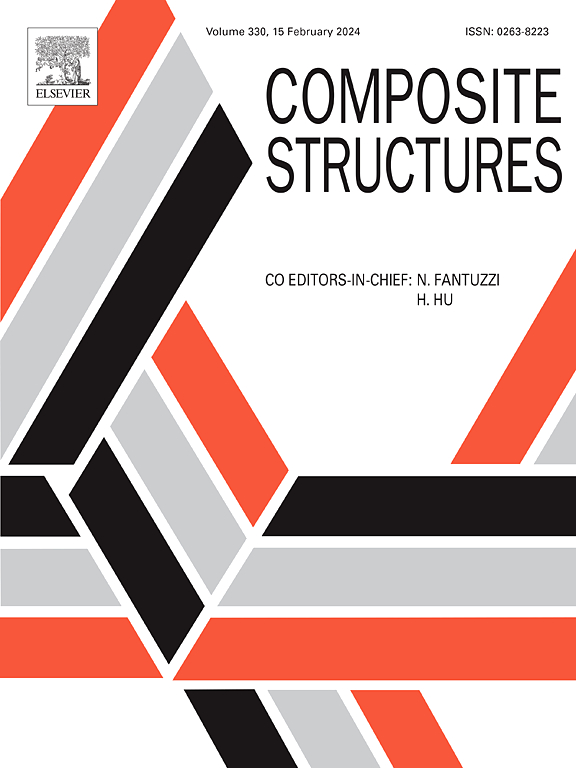Mathematical modeling of braiding yarn trajectories for variable cross-section mandrels of equal-coverage
IF 6.3
2区 材料科学
Q1 MATERIALS SCIENCE, COMPOSITES
引用次数: 0
Abstract
The braiding coverage is very important to the forming quality, especially its mechanical properties. To address the issue of constant coverage on rotating surfaces with variable cross-section mandrels, a modeling method for yarn trajectories with equal coverage rates is proposed in this research. The novel equal-coverage theory model takes into account the effect of variation of mandrel radius on the braiding angle, establishes the relationship between the braiding angle and the variation of braiding radius, and solves for the traction speed. The yarn trajectory is calculated by MATLAB and the traction speed based on the variations in the braiding angle and radius is computed as well. The resulting trajectories are input in NX.11 to construct a variable cross-section mandrel model with equal coverage rates. Comparing the simulation model with actual braided materials shows that the errors in the braiding angle and coverage rate are within ± 5° and 3 %, verifying the feasibility of the proposed method. The results will provide theoretical guidance and basis for further control of braiding quality.
等覆盖变截面芯棒编织纱线轨迹的数学建模
编织覆盖度是影响成形质量的重要因素,尤其是其力学性能。为了解决变截面芯棒旋转表面的恒定覆盖问题,提出了一种等覆盖率的纱线轨迹建模方法。该等覆盖理论模型考虑了芯轴半径变化对编织角的影响,建立了编织角与编织半径变化的关系,并求解了牵引速度。利用MATLAB计算了纱线的运动轨迹,并根据编织角度和编织半径的变化计算了纱线的牵引速度。将得到的轨迹输入到NX.11中,以构建具有相等覆盖率的变截面心轴模型。仿真模型与实际编织材料的对比表明,编织角度和覆盖率误差分别在±5°和3%以内,验证了所提方法的可行性。研究结果将为进一步控制编织质量提供理论指导和依据。
本文章由计算机程序翻译,如有差异,请以英文原文为准。
求助全文
约1分钟内获得全文
求助全文
来源期刊

Composite Structures
工程技术-材料科学:复合
CiteScore
12.00
自引率
12.70%
发文量
1246
审稿时长
78 days
期刊介绍:
The past few decades have seen outstanding advances in the use of composite materials in structural applications. There can be little doubt that, within engineering circles, composites have revolutionised traditional design concepts and made possible an unparalleled range of new and exciting possibilities as viable materials for construction. Composite Structures, an International Journal, disseminates knowledge between users, manufacturers, designers and researchers involved in structures or structural components manufactured using composite materials.
The journal publishes papers which contribute to knowledge in the use of composite materials in engineering structures. Papers deal with design, research and development studies, experimental investigations, theoretical analysis and fabrication techniques relevant to the application of composites in load-bearing components for assemblies, ranging from individual components such as plates and shells to complete composite structures.
 求助内容:
求助内容: 应助结果提醒方式:
应助结果提醒方式:


